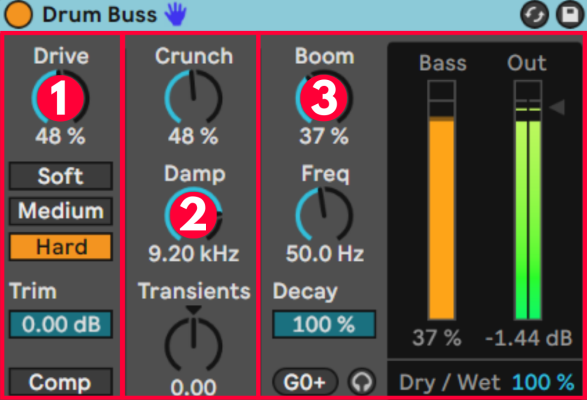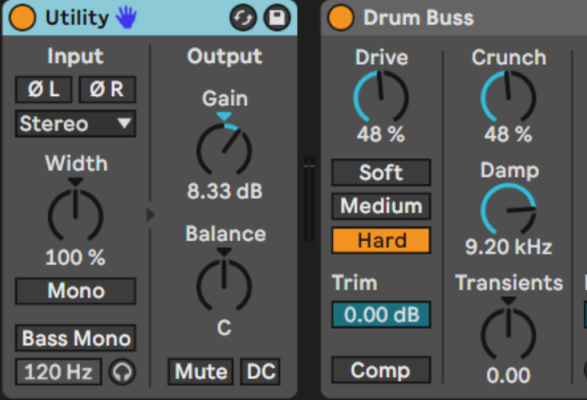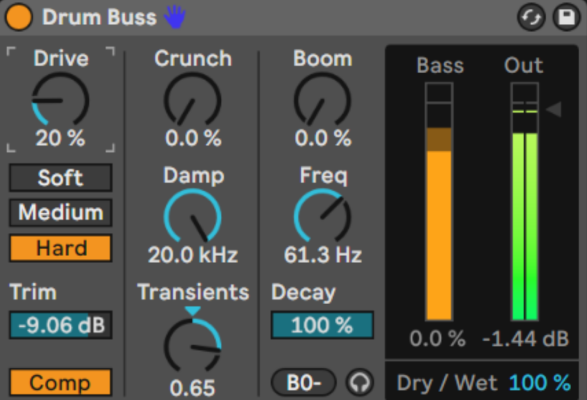Drum Buss
Ableton drum buss is a pretty new multi-effect plugin. As the name suggests it works great on the drum buss or group. You’ll find it under Audio Effects > Drive & Color > Drum Buss.

The drum buss plugin is divided vertically into three sections. First, we get the input and drive controls. There are three types of distortion.
Soft: waveshaping distortion.
Medium: limiting distortion.
Hard: clipping distortion with bass boost.
1. Drive & Input Controls
At the bottom, there’s a Comp button. This simply enables a fixed compressor. We can’t change anything about this compressor, the only option we have is to turn down the Trim control above it to reduce the signal going into the compressor. There’s no gain control to increase the level, but you can always use a utility plugin for that.

2. Crunch & Transients
Next, we’ve got a Crunch control, which is also a distortion effect, but only for mid and high frequencies. The Damp control is just a low-pass filter to get rid of harsh frequencies caused by the distortion.
Then the Transient control is actually beneficial when you want to add more punch to a sound. Turn it clockwise and you’ll increase the transients, or tick. Turn it counter-clockwise and you’ll attenuate the transients. It’s a great tool for piano and synths as well.
3. Boom & Output
Finally, we’ve got the Boom section. This is like a resonant filter, used to add more oomph to kick drums for example. The Boom knob controls the level of this effect, while the Frequency sets the center frequency from 30Hz to 90Hz. At the bottom, you can also see the note number. Click on the note to round the frequency control to the nearest value.

With the Decay control, you can adjust the length of this effect. There’s even a little speaker symbol to solo this Boom effect. On the right, you can see a meter labeled Bass to visualize the response of this effect. Here you can also adjust the output volume and the dry/wet balance.

